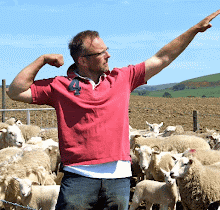24 hours. 5 minutes sleep. 6,000 miles. We are in Phnom Penh. Straight off the plane. A tuk tuk ride - sything through the heat, smells and madness of an alien culture - to the Royal Agricultural University to meet the Rector ... the main man.
With excellent English and endless patience for daft questions he draws the skeleton of Cambodian agriculture so we might be able to add bits of flesh at a later date.
He spoke of the future mostly. The one time he dwelt on the past he became emotional. By 2015 Cambodia wants to be the third largest exporter of rice in the world. The target is 1 million tonnes exported. In 2011 they officially export nothing. Already though, in the last 10 years, they have increased their average yield from 0.9 tonnes per hectare to 2.7 tonnes. New varieties, irrigation, double cropping have all helped.
Before Pol Pot - in 1974 - 85% of the population were farmers. Now it stands at 74%. 2 Hectares of Rice paddy makes a decent living especially if it can be double cropped. Yet most have around 1 hectare, many can’t double crop.
Corporate agriculture is now gaining momentum. As there is no legally effective deeds of ownership, companies have started farming smaller farmers’ land.
The land price has increased from $1,000 per hectare in the recent past to $15,000.
But the one question I wanted a different answer than I got was in relation to New Entrants. The brutal facts are 1. No one aspires to farm (too hard and looked down on) and 2. Most of the population have a direct family link to a farm anyway. As my study is on aspirational new entrants from non-farming backgrounds, I briefly consider my stupidity for not thinking the trip through ... I should really go back to the airport ... but then cold beer amidst the craziness of Phnom Penh with two fine Welsh gentlemen was too hard to resist.














